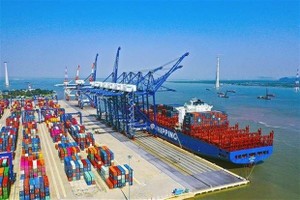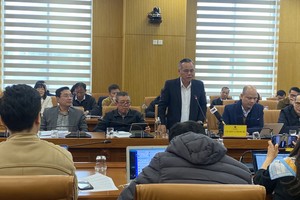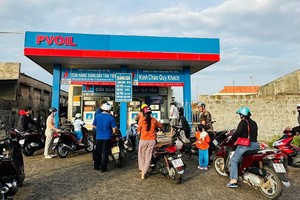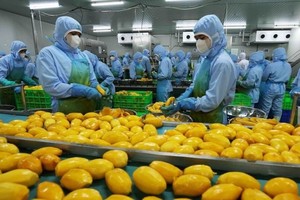
It is recorded in the market that savings interest rate at Nam A Bank has risen to 8.7 percent per annum for 36-month term for online deposit. Viet Capital Bank listed interest rate at 8.6 percent per annum for long-term deposit. The highest interest rate of VPBank for special programs also rose to 8.4 percent per annum. Lately, SHB also raised interest rate for 9-month term deposit to 8.2 percent, the highest level in the current market for this term. Earlier, this lender also issued certificate of deposit with interest rates from 8.6 to 8.9 percent per annum for 18-month, 24-month and 36-month terms. Certificate of deposit of Vietbank had an interest rate of up to 9.1 percent per annum.
Normally, commercial banks raised mobilizing interest rates in order to attract capital due to liquidity crunch. However, the interbank interest rates which are interest rates on short-term loans between banks showed that market liquidity remained high, helping the State Bank of Vietnam to attract capital via treasury bill channel with low interest rate level. Particularly, last week, the central bank lured VND24 trillion via treasury bills. Since the beginning of this year, a total of more than VND110.5 trillion has been attracted via open market operations with interest rates below 3 percent per annum.
Representative of a Ho Chi Minh City-based commercial bank whose highest savings interest rate is up to 8.8 percent per annum, said that increasing mobilizing interest rates is not related to liquidity. Pinning mobilizing interest rates at high level is to prepare capital for business opportunities during the last months of the year.
Commenting about the aforesaid movement, experts said that the tendency to push mobilizing interest rates to high level concentrated at small banks whereas mobilizing interest rates of four big lenders, including BIDV, Vietcombank, Agribank and VietinBank did not have any change. At the same time, the conditions to receive high interest rates of these banks are quite strict. For instance, in order to receive an interest rate of 8.8 percent per annum, customers have to deposit from VND100 billion with terms from 24 months to 36 months so there are not many customers qualified these conditions to receive high interest rate. Therefore, interest rate rise is merely in part but general mobilizing interest rate level does not increase.
Although mobilizing interest rates at some banks are nailed at high level, commercial banks unexpectedly announced cut in lending interest rates as of August 1. Particularly, VietinBank lowered lending interest rate by 0.5 percent per annum for some priority fields in accordance with policies of the State Bank of Vietnam’s and the Government. Agribank also reduced interest rate by 0.5 percent per annum for short-term loans for five priority sectors, 0.75-1 percent per annum lower than highest interest rate regulated by the State Bank. BIDV also cut ceiling lending interest rate to 5.5 percent per annum for the rest of this year for customers in fields, such as export, supporting industry and high-tech enterprises. Vietcombank also applied highest interest rate of 5.5 percent per annum for short-term loans in Vietnamese dong, a decrease of 1 percent compared to the prescribed level. This interest rate level is applied for existing loans and new loans from priority sectors. Not only state-owned commercial banks
but joint stock banks also slashed their lending interest rates.
This is the second time since the beginning of this year that lenders have reduced interest rates in order to support enterprises. The fact that banks cut interest rate amid the context of increasing mobilizing interest rate is considered to be surprising by economic experts as capital is not for five priority sectors only but extended to some other enterprises, such as high-techs and start-ups. In addition, it is applied for existing loans and new loans from now to the end of this year.
However, assessing the tendency of interest rate in the near future, market analysts of Bao Viet Securities Company said that with regulations limiting the ratio of short-term capital for medium and long-term loans continuing to be tightened, mobilizing interest rates for terms above 12 months will maintain at high level. Therefore, the chance for interest rate to drop will be merely directional and mainly for priority sectors.
























